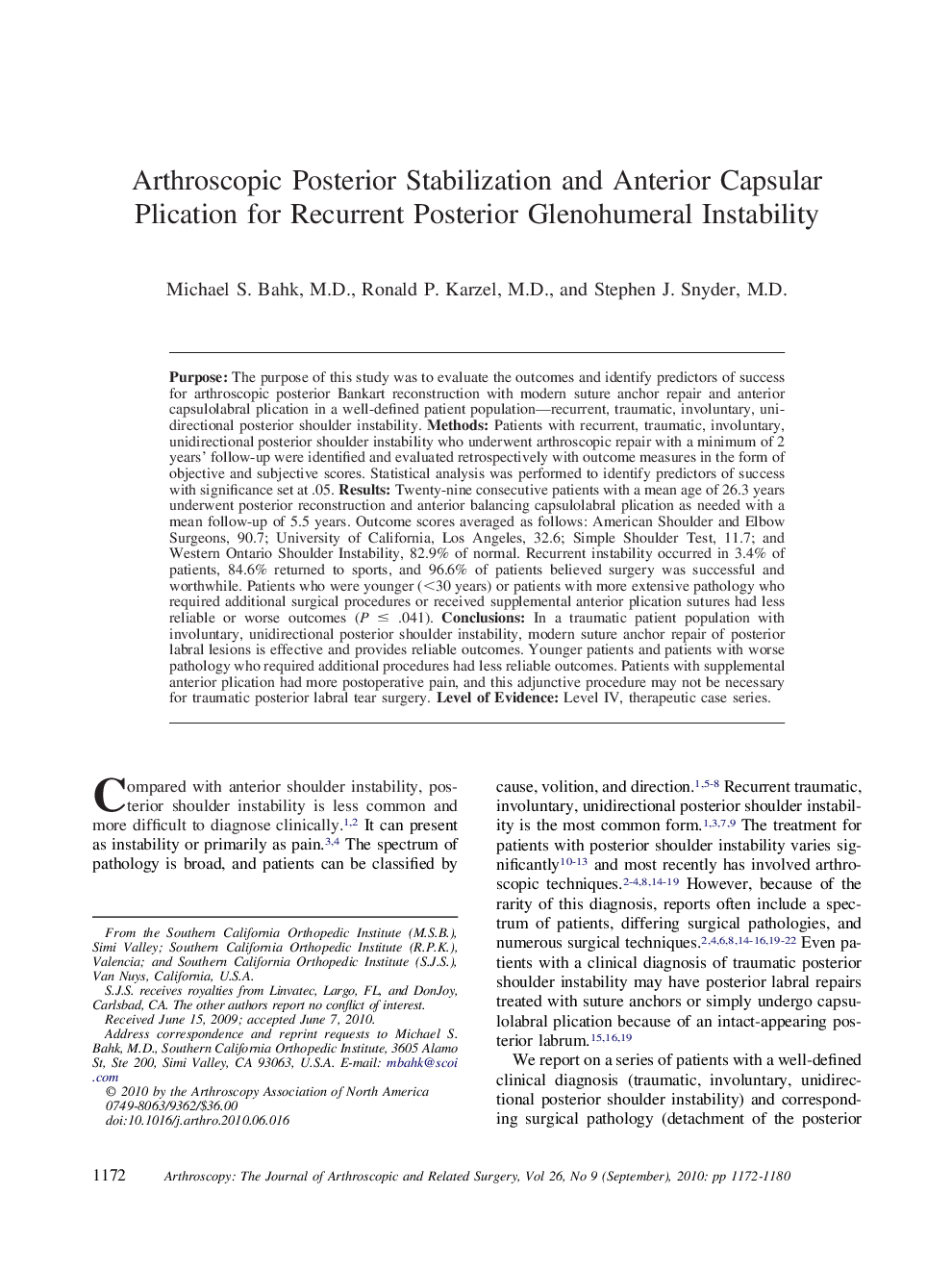| Article ID | Journal | Published Year | Pages | File Type |
|---|---|---|---|---|
| 4045241 | Arthroscopy: The Journal of Arthroscopic & Related Surgery | 2010 | 9 Pages |
PurposeThe purpose of this study was to evaluate the outcomes and identify predictors of success for arthroscopic posterior Bankart reconstruction with modern suture anchor repair and anterior capsulolabral plication in a well-defined patient population—recurrent, traumatic, involuntary, unidirectional posterior shoulder instability.MethodsPatients with recurrent, traumatic, involuntary, unidirectional posterior shoulder instability who underwent arthroscopic repair with a minimum of 2 years' follow-up were identified and evaluated retrospectively with outcome measures in the form of objective and subjective scores. Statistical analysis was performed to identify predictors of success with significance set at .05.ResultsTwenty-nine consecutive patients with a mean age of 26.3 years underwent posterior reconstruction and anterior balancing capsulolabral plication as needed with a mean follow-up of 5.5 years. Outcome scores averaged as follows: American Shoulder and Elbow Surgeons, 90.7; University of California, Los Angeles, 32.6; Simple Shoulder Test, 11.7; and Western Ontario Shoulder Instability, 82.9% of normal. Recurrent instability occurred in 3.4% of patients, 84.6% returned to sports, and 96.6% of patients believed surgery was successful and worthwhile. Patients who were younger (<30 years) or patients with more extensive pathology who required additional surgical procedures or received supplemental anterior plication sutures had less reliable or worse outcomes (P ≤ .041).ConclusionsIn a traumatic patient population with involuntary, unidirectional posterior shoulder instability, modern suture anchor repair of posterior labral lesions is effective and provides reliable outcomes. Younger patients and patients with worse pathology who required additional procedures had less reliable outcomes. Patients with supplemental anterior plication had more postoperative pain, and this adjunctive procedure may not be necessary for traumatic posterior labral tear surgery.Level of EvidenceLevel IV, therapeutic case series.
